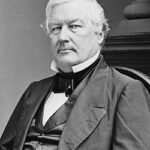President Millard Fillmore signed the Compromise of 1850 on September 18, 1850. This legislative package aimed to resolve mounting tensions between free and slave states. The Fillmore Compromise 1850 included five separate bills addressing territorial expansion and slavery. 📊
The Fugitive Slave Act Provisions
The most controversial component required all citizens to assist in capturing runaway slaves. Federal commissioners received $10 for returning alleged fugitives versus $5 for releasing them. The law denied accused individuals the right to testify or request jury trials. Special federal agents gained broad powers to pursue escaped slaves nationwide.
Northern Opposition and Resistance
Abolitionists denounced the law as morally reprehensible and unconstitutional. Many Northern states passed personal liberty laws to circumvent federal requirements. Religious leaders condemned forcing citizens to participate in slavery enforcement. ⚠️ Mass protests erupted across Northern cities following the law’s passage.
Fillmore’s Political Calculation
Fillmore believed the Fillmore Compromise 1850 would preserve the Union permanently. He prioritized national unity over sectional interests regarding slavery expansion. Southern Democrats threatened secession without stronger fugitive slave protections. The president hoped moderate positions would satisfy both regions. 💰
Impact:
The Fillmore Compromise 1850 temporarily reduced secession threats but ultimately accelerated sectional conflict. Northern resistance to the Fugitive Slave Act undermined federal authority nationwide.
Immediate Political Consequences
Fillmore lost Whig Party support and failed to receive 1852 presidential nomination. Northern Whigs abandoned the party over slavery compromise positions. Free Soil Party membership surged following the law’s enforcement. 🔥 Several high-profile fugitive slave cases inflamed public opinion against slavery.
Rise of Anti-Slavery Sentiment
Uncle Tom’s Cabin gained popularity partly due to Fugitive Slave Act outrage. Underground Railroad activity increased significantly after 1850 legislation passage. Northern churches openly defied federal law regarding runaway slaves. Personal liberty laws in nine states directly challenged federal authority.
Long-term Constitutional Crisis
The compromise deepened constitutional debates over federal versus state sovereignty. Southern states cited Northern non-compliance as justification for future secession. Republican Party formation in 1854 drew heavily from compromise opposition. 📉
Path to Civil War
Rather than settling slavery questions permanently, the legislation intensified regional divisions. Kansas-Nebraska Act of 1854 further undermined compromise stability. By 1860, sectional tensions reached irreversible levels despite Fillmore’s efforts. The Fugitive Slave Act remained a rallying cry for abolitionists throughout the 1850s. 🌍 International observers viewed American democracy as fundamentally unstable over slavery.
